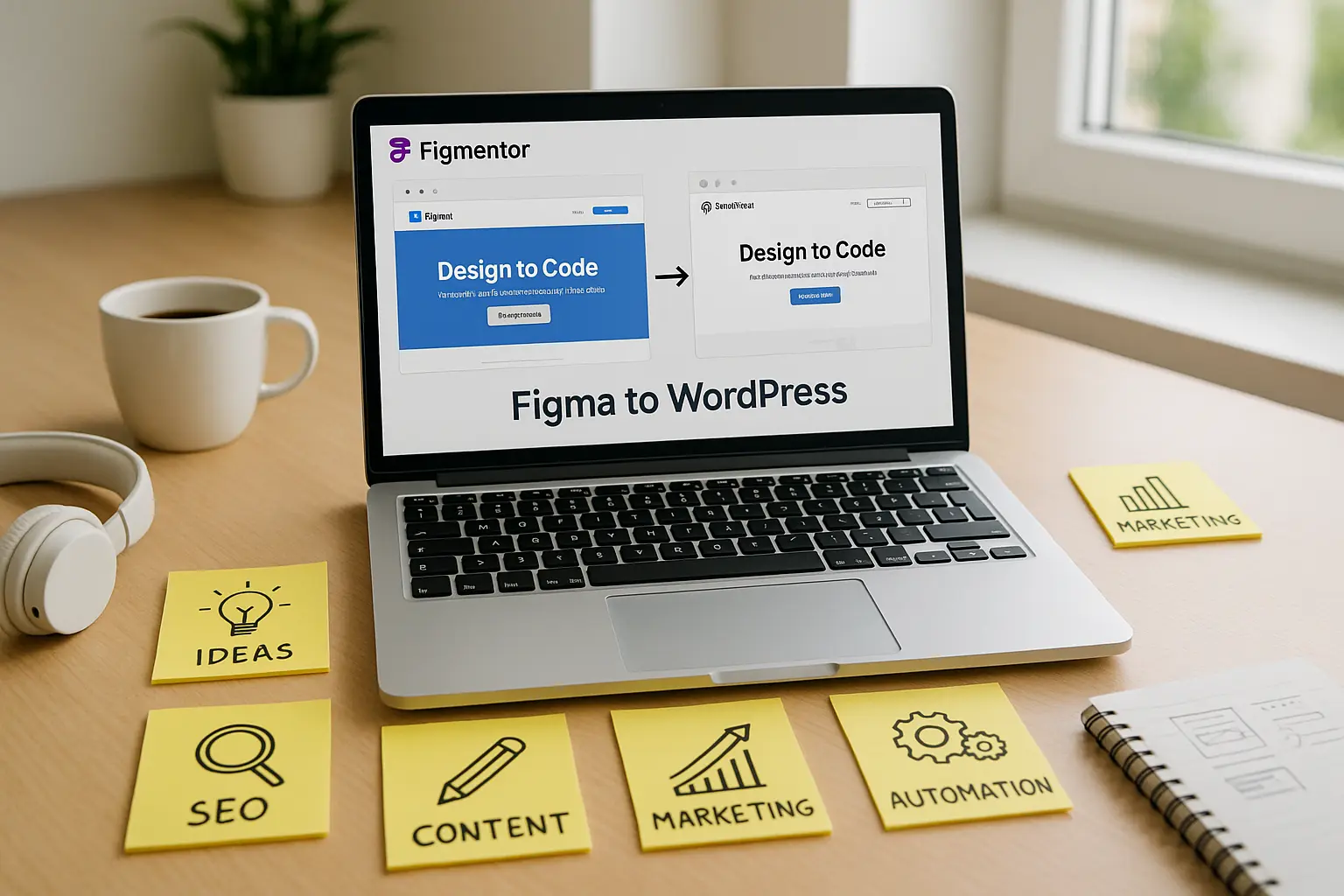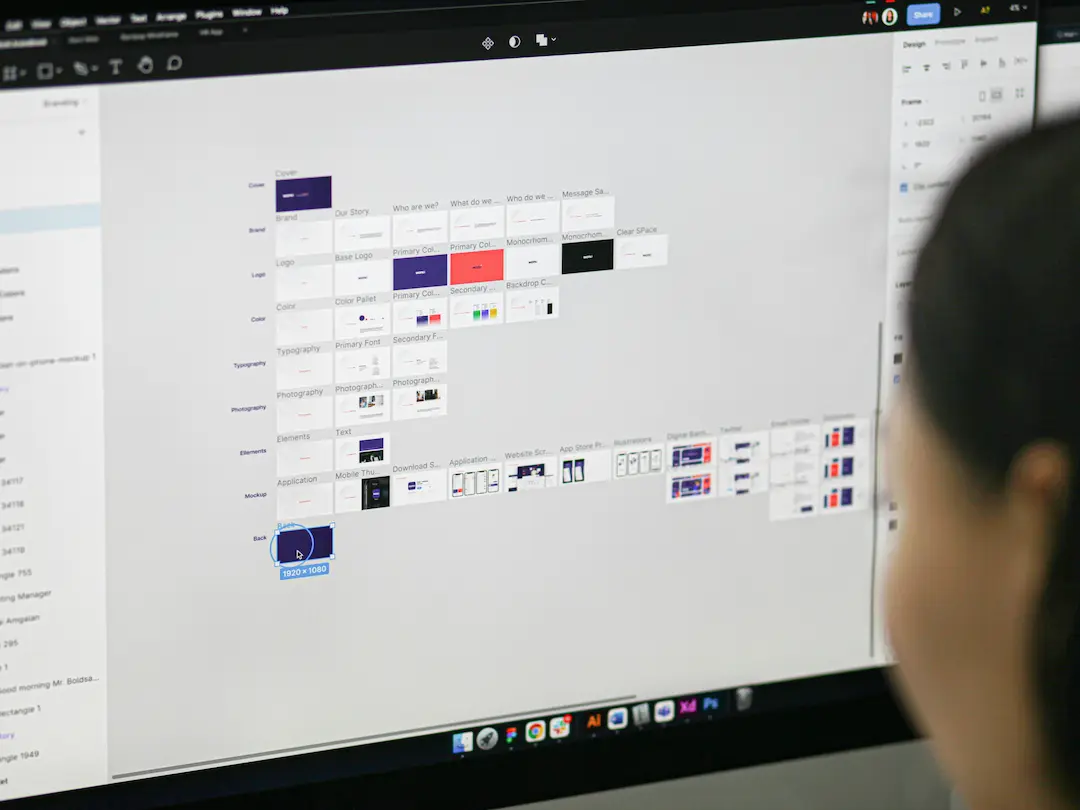The Designer’s Dilemma with WordPress
Let’s face it - WordPress has never been a designer’s dream. While it powers over 40% of the web, its origins as a blogging platform haunt it to this day. For many designers, WordPress feels more like a developer’s playground than a creative space.
WordPress’s Blogging Origins and Its Legacy Baggage
WordPress was created in 2003 with one core function in mind: blogging. Over time, it evolved into a full content management system (CMS), but its architecture never fully escaped that early purpose. As a result, modern designers encounter friction when trying to build dynamic, visually rich experiences.
Common Pain Points Designers Face
Overwhelming Backend Interface
The WordPress dashboard is functional - but far from intuitive. For designers used to sleek, minimal design environments like Figma or Adobe XD, the WordPress UI feels outdated and cluttered.
Lack of Visual Feedback During Design
Designers crave real-time visuals - drag, drop, and see the changes instantly. WordPress requires constant back-and-forth between editing screens, front-end previews, and sometimes even browser refreshes to see updates.
Plugin Chaos and Security Headaches
To extend functionality, designers often have to rely on multiple third-party plugins. This introduces plugin conflicts, update issues, and even security vulnerabilities - pulling designers deeper into technical territory they never signed up for.
The Figma Frustration: From Pixels to Plugins
Designers Want Visual Fidelity
When a designer creates a masterpiece in Figma, they expect it to look and feel the same in production. But bringing that design into WordPress requires painstaking reconstruction - often ending in disappointment.
The Disconnect Between Figma and WordPress
Even with great tools, the process typically looks like this:
- Design the layout in Figma
- Open WordPress (and maybe Elementor)
- Recreate the design manually - block by block
- Tweak margins, adjust padding, double-check fonts
- Accept that some things will never look just right
It’s a grind. And it wears down even the most passionate designers.
How Elementor Changed the Game
Thankfully, the arrival of Elementor gave WordPress a much-needed facelift.
Visual Drag-and-Drop Interface
Elementor introduced a live editing experience that let designers build web pages visually. No code. No jumping between editor and preview. Just real-time design.
No-Code Customization of Layouts
From headers to hero sections, buttons to galleries, Elementor offered full creative control - with adjustable typography, spacing, and styling baked in.
Empowering Designers Without Developers
Perhaps Elementor’s greatest gift was independence. Designers could now execute complex layouts and responsive designs without relying on developers for every tweak.
Elementor’s Limitations and the Manual Rebuild Grind
But even Elementor didn’t solve everything.
The Redundant Workflow Pain
Despite the drag-and-drop ease, you still had to rebuild your Figma design manually inside Elementor. That meant duplicating work, pixel-matching layouts, and spending hours on the same task twice.
Pixel Perfection vs. Plugin Adjustments
Margins are off. Fonts don’t match. Buttons look “almost right.” These tiny discrepancies add up and pull designers into a never-ending loop of tweaking.
Hours Lost to Margins, Padding, and Fonts
Rebuilding each component - headings, image blocks, spacing - takes time. Multiply that across a 10-page site, and you’ve burned 10–15 hours just translating design into reality.
Enter Figmentor: Bridging Figma and Elementor Seamlessly
This is where Figmentor steps in and changes the game.
One-Click Export from Figma
Figmentor lets you export your Figma designs straight into Elementor with a single click. No more repetitive reconstruction.
AI-Powered Layout Conversion
Using advanced AI, Figmentor reads your Figma file and replicates the structure, spacing, typography, and layout inside WordPress - with astonishing accuracy.
Built-In Image and UI Tools
Beyond layout, Figmentor offers tools like:
- Background removal
- Image cropping and scaling
- Font auto-matching
- Responsive structure suggestions
These features tackle the most annoying edge cases - saving hours.
How Figmentor Saves Designers Time and Sanity
Elimination of Redundant Tasks
No more copy-pasting. No more rebuilding. Figmentor translates your design once and for all.
Accurate Translation of Designs
Designs don’t just look similar - they look identical. Pixel-perfect fidelity from Figma to WordPress.
Designer-First Features Built-In
Unlike most dev-focused tools, Figmentor is crafted specifically for designers. The interface, the automation, and even the language feel familiar - not foreign.
What’s Next: AI-Generated UI Design Inside Figma
And Figmentor isn’t stopping there.
Smart Layouts Tailored to Goals
Soon, designers will be able to generate AI-powered layouts inside Figma, purpose-built for conversion, brand consistency, and responsiveness.
Custom Branding with No Templates
Forget cookie-cutter templates. Figmentor AI will design original layouts tailored to your brand, your voice, and your visual identity - ready to be exported in seconds.
Why Designers Don’t Really Hate WordPress
It’s the Workflow - Not the Platform
The truth is: WordPress is powerful. But it was never built with a visual-first mindset. That’s why designers have resisted it - not because of what it is, but because of what it makes them do.
How the Right Tools Reframe the Experience
With tools like Elementor and Figmentor, designers finally feel seen. The workflow becomes fluid. The creativity returns. And WordPress - once a burden - becomes a canvas again.
Frequently Asked Questions (FAQs)
Q1: Why is WordPress so frustrating for designers? A: Its backend is non-visual and clunky, requiring designers to rebuild layouts they already created elsewhere.
Q2: Can Elementor solve all the design issues in WordPress? A: Elementor improves visual editing but still requires manual work to rebuild Figma designs.
Q3: What is Figmentor? A: Figmentor is an AI-powered plugin that lets designers export Figma designs directly into Elementor, saving time and ensuring pixel-perfect results.
Q4: Is Figmentor suitable for beginners? A: Absolutely. Figmentor’s intuitive interface makes it easy for anyone familiar with Figma or Elementor.
Q5: Will Figmentor support AI UI generation? A: Yes, Figmentor is rolling out an AI UI Generator inside Figma that creates clean, responsive, and branded layouts automatically.
Q6: How much time can Figmentor save? A: Depending on project size, Figmentor can save 10+ hours by eliminating manual design translation.
Final Thoughts: Take Back Your Creative Workflow
Designers don’t hate WordPress - they hate inefficiency. With new tools like Figmentor, that inefficiency disappears. Now, creatives can focus on design, not development. And that changes everything.
👉 Try Figmentor today and experience design without limits.
You can switch between modes anytime by simply typing the mode name (e.g., Article Mode, Blog Article + Image Mode, Custom Mode, Multilingual Mode).
What would you like to do next? Get LIFETIME ACCESS to My Private Prompt Library: https://buymeacoffee.com/mtspromptslibrary/e/236177 1️⃣ Translate this article into another language. 2️⃣ Generate images to match the article (blog-ready visuals). 3️⃣ Start a new SEO article




